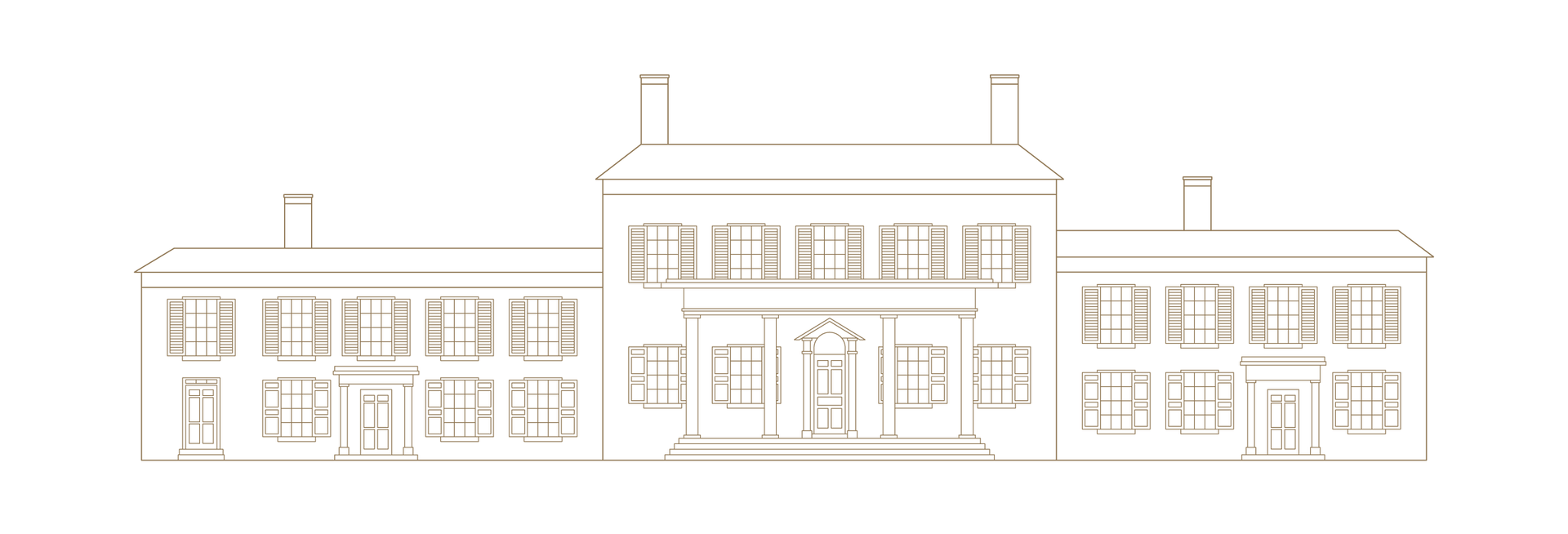our history
As home to one of the signers of the Declaration of Independence and five New Jersey governors, Morven has played a role in the history of New Jersey and the nation for more than 200 years.
The Site Before Morven
The land on which Morven sits is part of Lenapehoking, the ancestral homeland of the Lenni-Lenape people.
+
Kings Highway, or Stockton Street, which runs directly in front of Morven, connecting Trenton to New Brunswick, was first a pathway created by the Lenni-Lenape. In 1701 William Penn granted several thousand acres of land to Richard Stockton (c. 1652–1709). The land passed to his son John Stockton (1701–1758), and was then given to his son Richard Stockton, the Signer, who had a home built on this site around 1757.

1757–1801
Richard Stockton the Signer & Annis Boudinot Stockton
It is the Revolutionary period at Morven that first gave the Stockton family and this site national significance.
+
“Mrs. Stockden’s [sic] is a little way out of town. The house is large for a country house, it has four rooms on a floor commodious but not grand.”
—CHARLES THOMSON, SECRETARY OF THE CONTINENTAL CONGRESS, 1783
It is the Revolutionary period at Morven that first gave the Stockton family and this site national significance.
A distinguished lawyer and judge, Richard Stockton (1730–1781) was born in Princeton and had Morven built on land gifted to him by his parents. He graduated in the first class of the College of New Jersey (today Princeton University) and later served as a trustee. Stockton was elected to the Second Continental Congress and was one of five New Jersey signatories of the Declaration of Independence. His wife, the poet Annis Boudinot Stockton (1736–1801), was among the first women to be published in the colonies. Richard and Annis were well-connected with prominent figures of 18th century America, including their son-in-law Benjamin Rush, General George Washington, Annis’ brother Elias Boudinot IV, among others.
As a home of a signer of the Declaration of Independence, Morven’s walls bore witness to conversations on liberty, freedom, and justice. However, like many Founding Fathers, Stockton held men, women, and children in bondage, including Cesar, Houghton, and Marcus Marsh.
The exact date that Morven was first built is unknown, but it was between the time Stockton acquired the property in 1754 and when the original structure and adjoining kitchen burnt to the ground on Christmas night of 1758.
The Stocktons likely started to rebuild soon after—this time in brick. They began with a one-and-a-half-story home. It was at first three bays across (a door with a window on either side) and was then expanded to four bays. Soon after, they added the central block, which was completed by 1766.
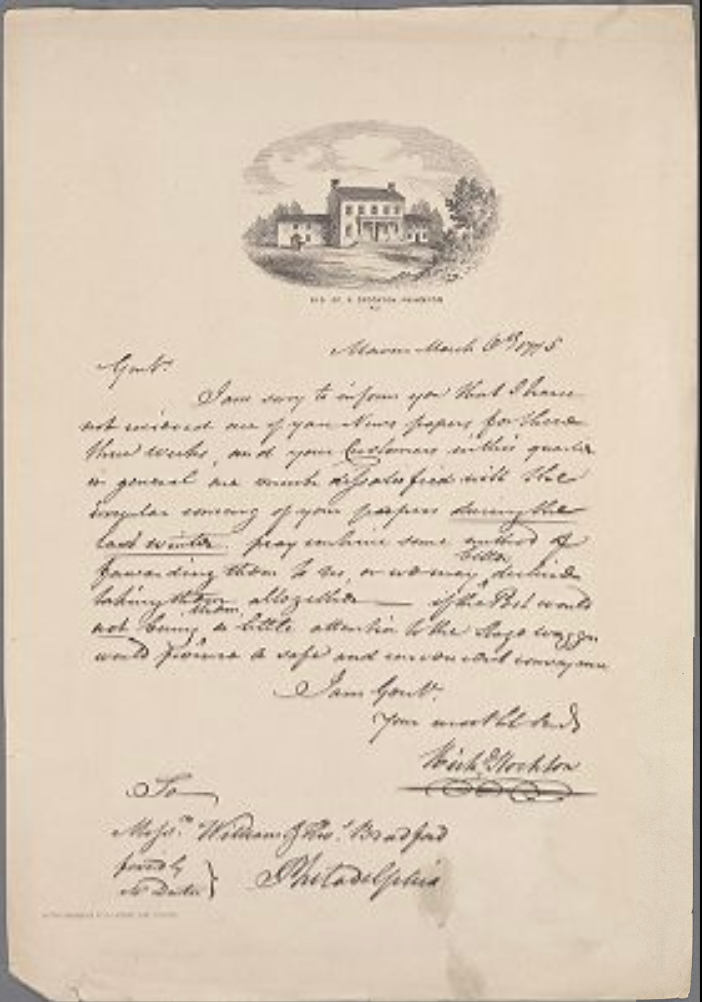
Res. of R. Stockton, Princeton, N.J. on letterhead

Portrait of Annis Boudinot Stockton (1736–1801), late 19th century to early 20th century. Unidentified artist, after John Wollaston (1710–1775). Princeton University, bequest of Mrs. Alexander T. McGill.

Portrait of Richard Stockton (1730–1781), late 19th century to early 20th century. Unidentified artist, after John Wollaston (1710–1775). Morven Collection.
1801–1837
Richard Stockton the Duke & Mary Field Stockton
In the early nineteenth century Morven underwent renovations, additions, and improvements under the ownership of Richard Stockton, the Duke, and his wife Mary Field Stockton
+
“...the Mansion House, farm and plantation called Morven upon which I was born, have always lived, and hope to die.”
—RICHARD STOCKTON THE DUKE
Richard the Duke (1764–1828), was the first son of Richard and Annis. He graduated from the College of New Jersey in 1779 and became a lawyer like his father. He was known as “the Duke,” for his imperious manner. He ran unsuccessfully for governor four times and in 1796 was appointed to an unexpired term as U.S. senator, which he served out in Philadelphia until 1799. He then served in the United States Congress from 1813–15. He married Mary Field (1766–1837), of Bordentown, in 1788, and together, they would raise nine children. The Duke enslaved numerous men, women, and children at Morven, including Nancy, Phillis, Anthony, Kate, Hannibal Simpson, and Thomas Jewell.

Portrait of Mary Field Stockton (1767–1837), 1825. Charles Bird Lawrence (1790–1864). Morven Collection.
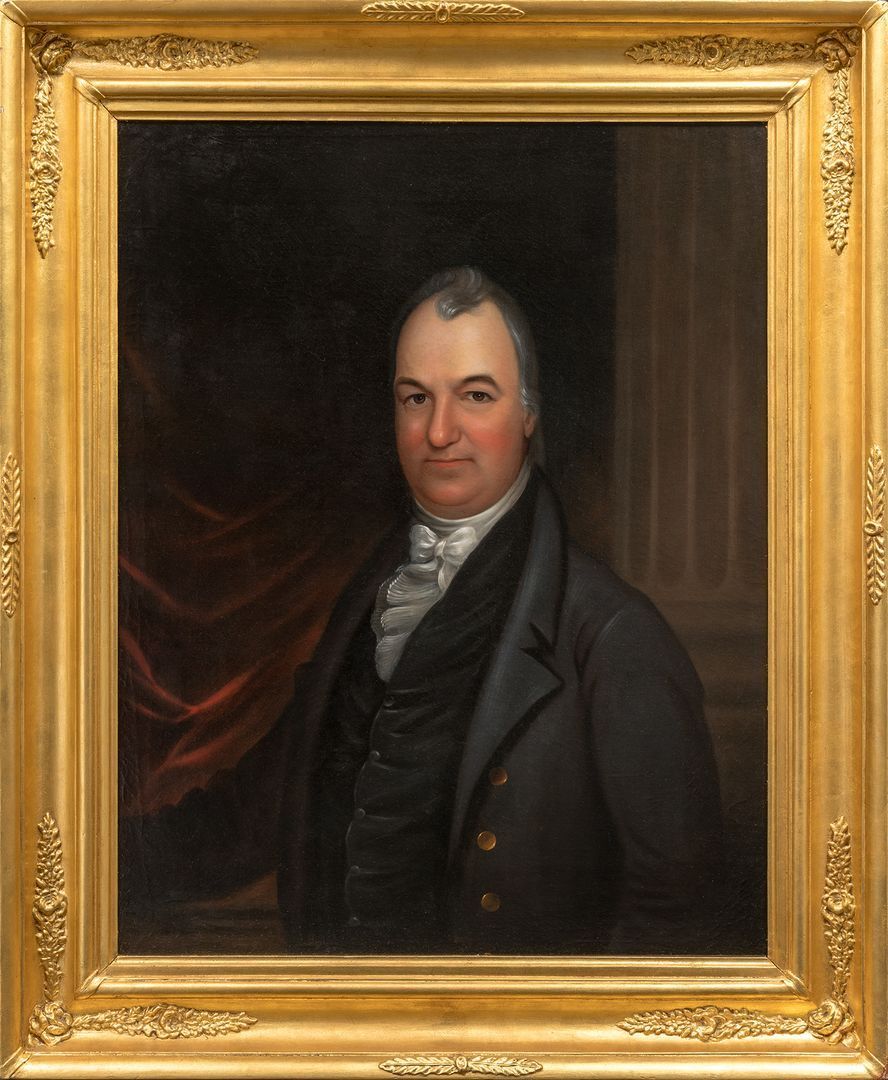
Portrait of Richard Stockton (1764–1828), early nineteenth century. Charles Bird Lawrence (1790–1864). Morven Collection.
The Duke renovated much of Morven, beginning with the addition of an east wing in 1788. Six years later, the entire central block of the house was rebuilt to have higher ceilings and larger windows. He also made many improvements to the Morven landscape, the most lasting of which was the planting of the Horse Chestnut Walk which connected Morven’s eastern entrance to present-day Bayard Lane. The Duke also constructed an Ice House, a novelty in the eighteenth century.

View of Morven from the Southwest, 1840. Collection of the Historical Society of Princeton.

The Stockton Mansion, unknown artist. Appleton’s Journal, December 25, 1875.
1838–1866
Commodore Robert Field Stockton & Harriet Stockton
The third generation of Stocktons to own Morven spent their considerable wealth on furnishing, decorating and improving this property, in addition to shaping a political landscape locally, nationally, and abroad.
+
Morven’s next generation of Stocktons was led by Robert Field Stockton (1795–1866). As a commodore in the United States Navy with a reputation for bending the rules, Stockton was a key but controversial figure in America’s quest for expansion. Stockton helped secure the land that would become Liberia for the American Colonization Society, and soon after became President of the New Jersey Colonization Society. In 1845, Stockton was ordered to Galveston, Texas to turn sentiment towards a U.S. takeover. From there, he sailed to California where his push for power eventually led President Polk to declare him insubordinate. His marriage to Harriet Maria Potter (1801–1862) of Charleston, South Carolina, brought an influx of southern wealth to Princeton and many of the Commodore’s projects, including the Delaware & Raritan Canal, as well as the construction of Trinity Church and numerous homes in Princeton. His land holdings stretched across the country, with mines in Virginia, North Carolina, and California, and a plantation in Georgia. Stockton profited from the labor of at least 125 enslaved people on his Georgia and Virginia land.
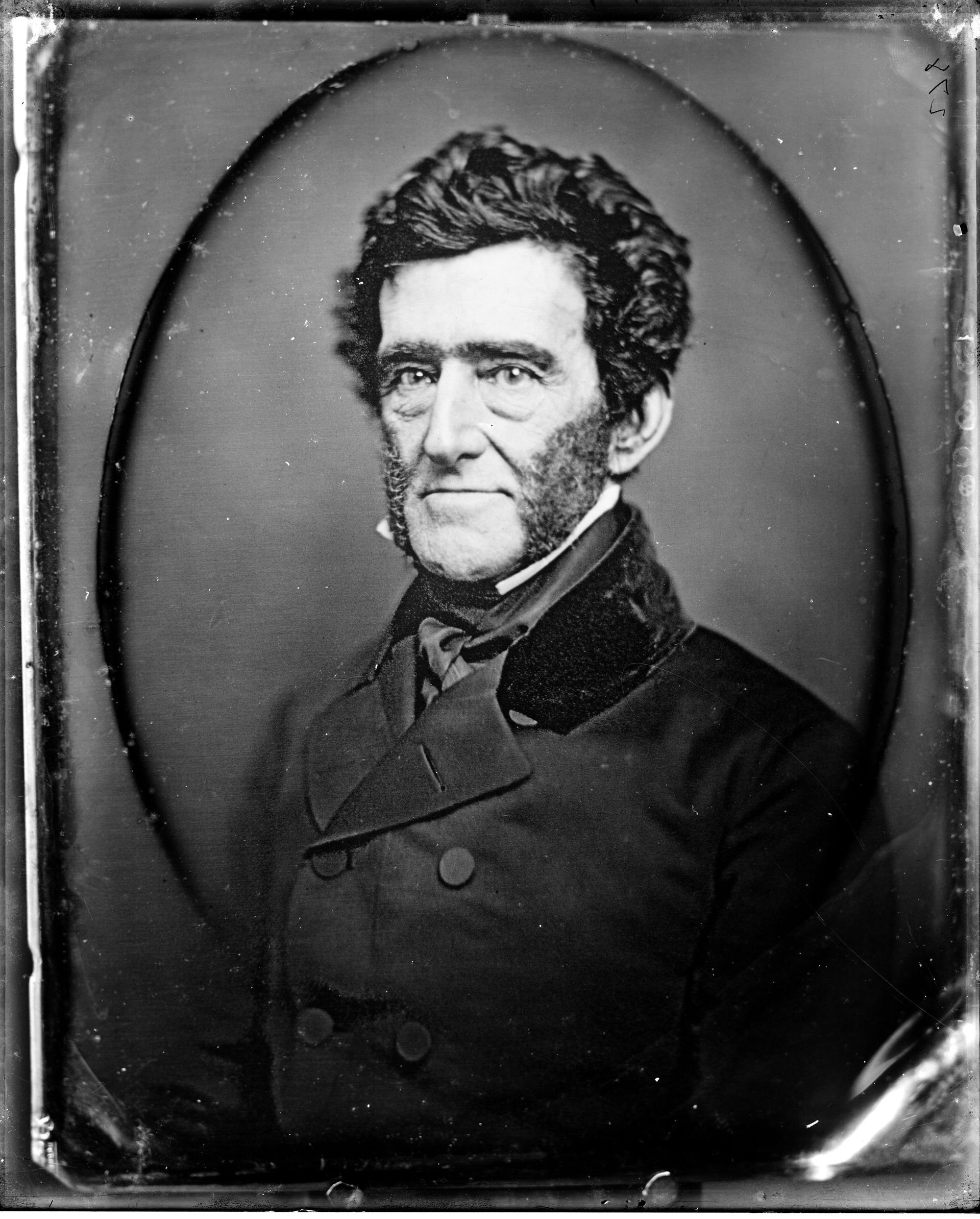
Portrait of Robert Field Stockton, c. 1855–1860. Daguerreotype. Collection of the Historical Society of Princeton.
The 1850s saw a large building campaign by Commodore Robert Field Stockton (1795–1866), including the installation of plumbing and gas lighting, the extension of both wings of Morven, and the construction of at least two greenhouses.
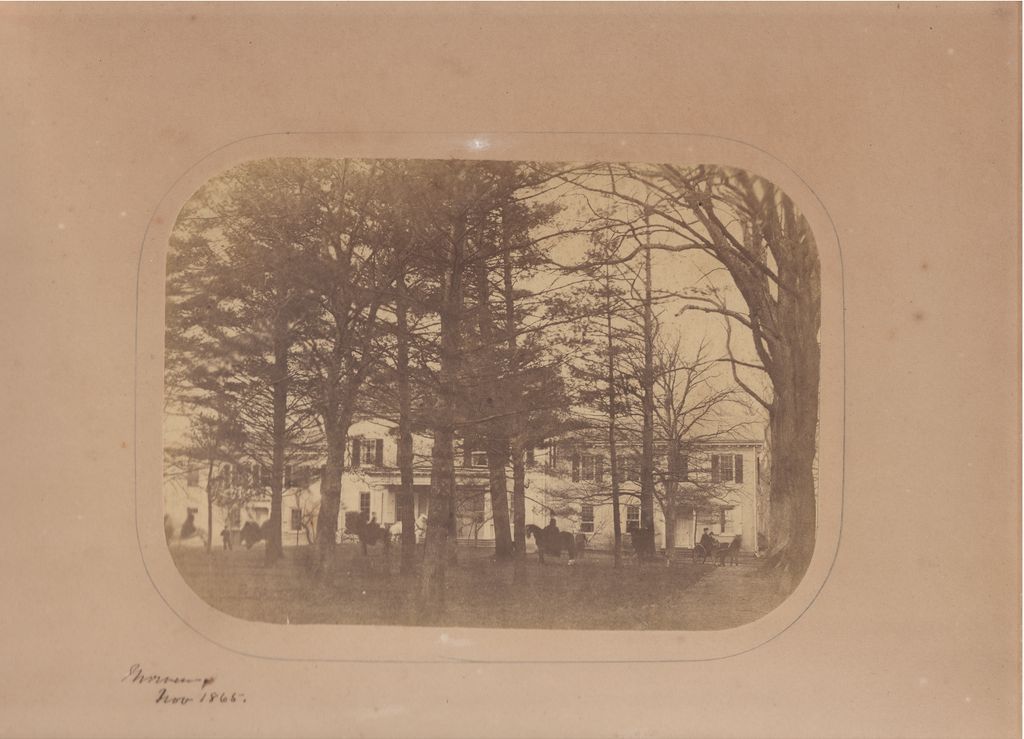
Stockton Family on Horseback at Morven, November 1865. Morven Archive. Gift of William Sands.
1869–1890
Samuel Witham Stockton & Sarah Hodge Stockton
After the Civil War, Morven saw a scaled-down lifestyle, with less material changes to the site, but still contained a full household.
+
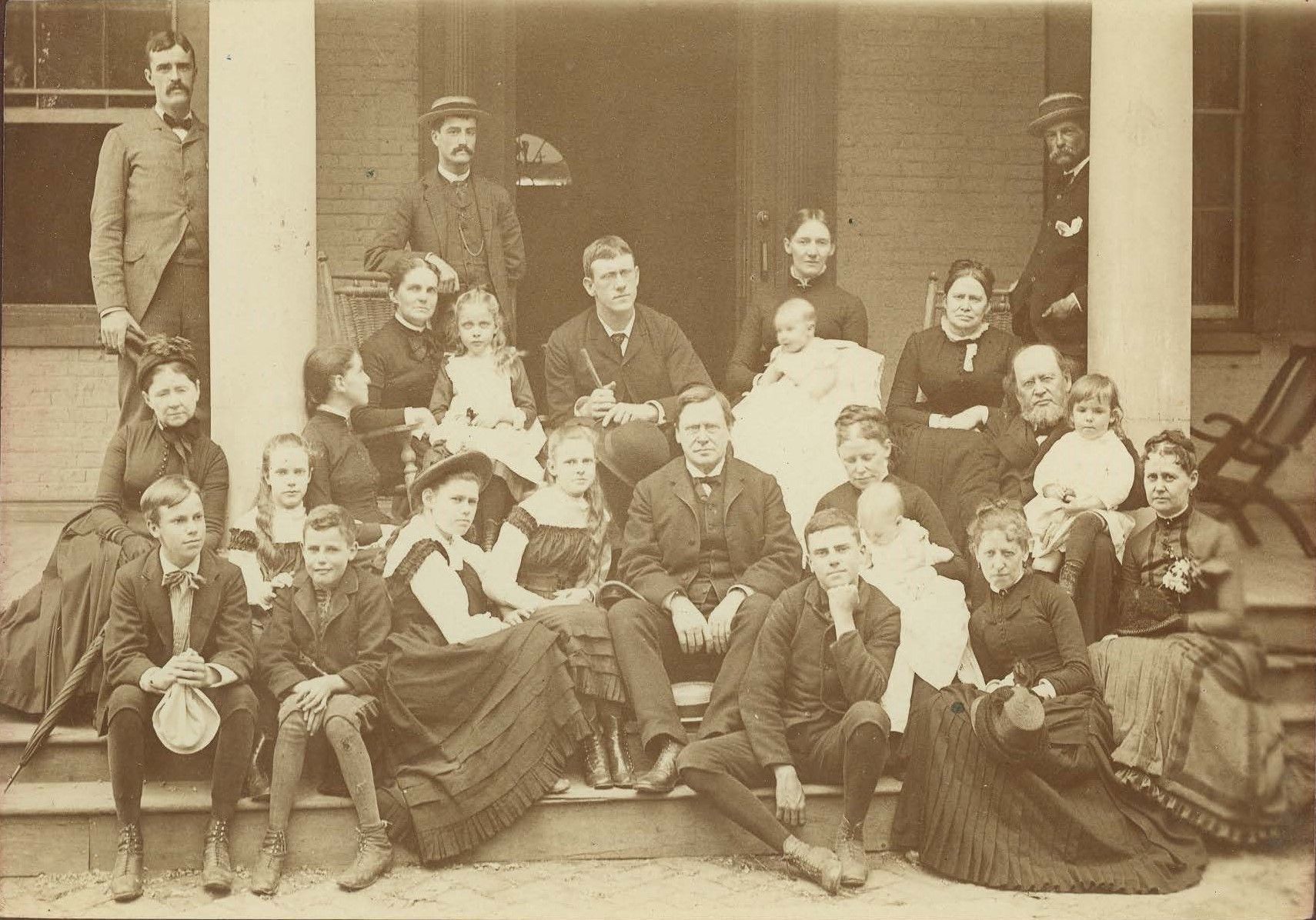
Samuel Witham, Sarah Hodge Stockton, and family on the front porch of Morven, c. 1883. Courtesy of Special Collections, Princeton Theological Seminary.
After the death of Commodore Robert F. Stockton, his heirs transferred Morven to Samuel Witham Stockton, their cousin, to satisfy a debt. A Civil War veteran, he served as aide-de-camp to his uncle, General David Hunter, and participated in the Battle of Bull Run. In 1866, he married his step-sister Sarah Hodge Stockton.
Although Samuel and Sarah were the Stocktons with the smallest means to inhabit Morven, the house was a warm and welcoming place for Stockton children, cousins, and friends. In the winter, there was skating on the Morven pond and sledding along Elm Road. In the warmer months, boys and girls played baseball and football near the orchard along Bayard Lane.
Although Samuel and Sarah were the Stocktons with the smallest means to inhabit Morven, the house was a warm and welcoming place for Stockton children, cousins, and friends. In the winter, there was skating on the Morven pond and sledding along Elm Road. In the warmer months, boys and girls played baseball and football near the orchard along Bayard Lane.
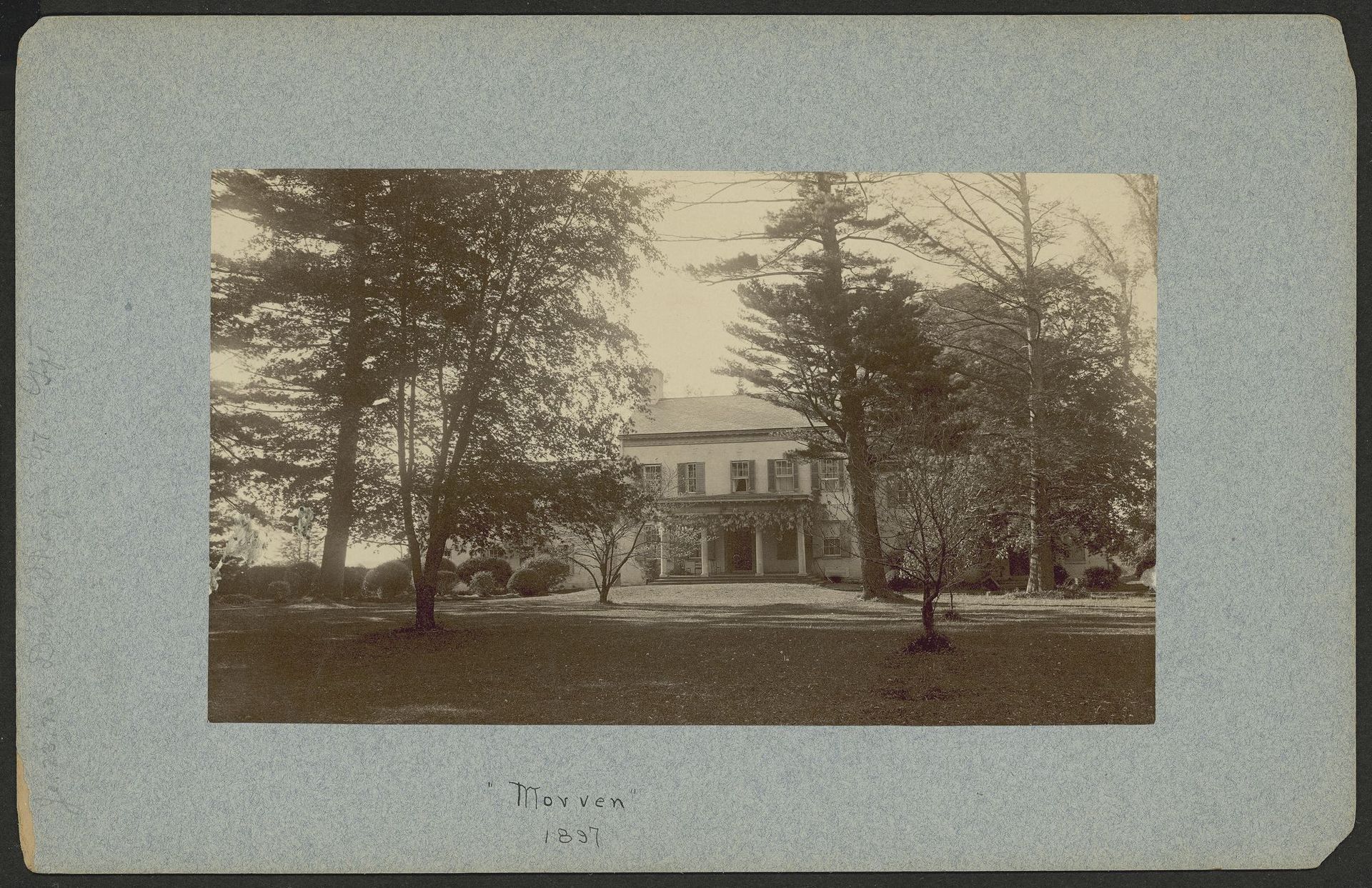
View of Morven, 1897. Courtesy of Princeton University Library.
Samuel also owned the adjacent Hayridge Farm (also known as Constitution Hill) and ran the two properties as working farms. The census also records five servants living at Morven: Julia Cox, Ellen Murphey, Mary A. Grogan, Annie Hahn, and Katy Stout.
By 1890, Samuel and Sarah could no longer afford to maintain Morven. The home was scheduled to be sold at a sheriff’s sale, when Samuel transferred the property to a group of trustees who decided to subdivide it and put lots up for sale.
By 1890, Samuel and Sarah could no longer afford to maintain Morven. The home was scheduled to be sold at a sheriff’s sale, when Samuel transferred the property to a group of trustees who decided to subdivide it and put lots up for sale.
1891–1928
Helen Hamilton Shields Stockton & Bayard Stockton
The Colonial Revival movement of the late nineteenth to early twentieth century saw an interest in the preservation of sites connected to the founding of the United States, often through women’s efforts.
+
“We spent all afternoon going all over Morven. It is a charming old house –the woodwork delightful and the rooms have great capabilities.”
—DIARY OF HELEN HAMILTON STOCKTON, JULY 31, 1891
As the Colonial Revival Movement began to take hold in the last quarter of the nineteenth century, Helen Hamilton Shields Stockton (1864–1949) found herself in a run-down but truly historic home. Her father Charles Woodruff Shields had purchased the home for his son-in-law Bayard Stockton (1853–1928), who was a direct descendant of the first three generations of Stocktons living at Morven.
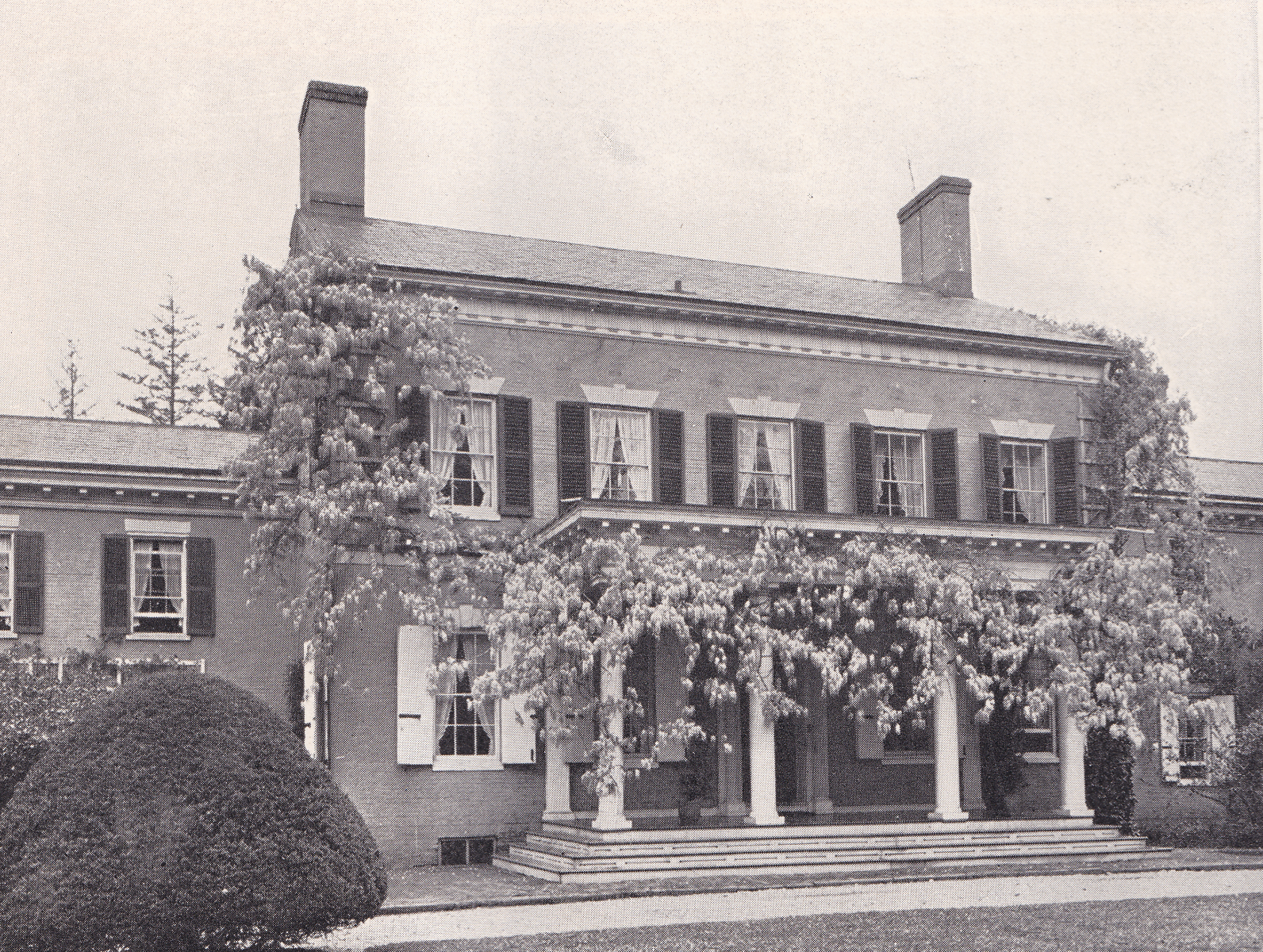
Front view of Morven with wisteria, July 1927. Published in The House Beautiful, Vol. LXII, No. I. Morven Archive.
Helen spent decades restoring Morven and its gardens to the Colonial era, embellishing its history along the way. She installed the heavy molding in the center hall and parquet floors. She was determined to recreate and convince others of what she believed to be Annis and Richard Stockton’s garden.

Colonial Christmas Party, 1901. Morven Archive.
While she left webs of myths for historians to unravel later, Helen ultimately protected Morven’s future by selling it to Governor Walter Edge and his wife Camilla with the understanding that the home remain the governor’s mansion or a public historic site, securing its legacy as an important piece of American history.

View of Morven’s Colonial Revival Garden looking North, 1924. Photograph by Hastings Eells. Morven Archive. Courtesy of William H. Eells.
1928–1943
Robert Wood Johnson, Jr. & Margaret Shea Johnson
For a decade and half, Morven was home to renters Robert Wood Johnson, president and chairman of Johnson & Johnson, his wife Maggi Shea, former Vogue model, and their daughter, Sheila.
+
Robert Wood Johnson Jr. and Margaret (Maggi) Shea made Morven their home after they married in Paris in 1930. The glamorous Johnson family traveled and hosted parties. At Morven, they made modern updates, most visibly: a tennis court, pool house and pool at the back of the property.
In 1934, the couple welcomed their daughter, Sheila. As vice president of the company, Johnson chose Morven for its proximity to the Johnson & Johnson headquarters in New Brunswick and its Princeton prestige. While living at Morven, Johnson was elected president, and then chairman of the board of Johnson & Johnson.
In 1934, the couple welcomed their daughter, Sheila. As vice president of the company, Johnson chose Morven for its proximity to the Johnson & Johnson headquarters in New Brunswick and its Princeton prestige. While living at Morven, Johnson was elected president, and then chairman of the board of Johnson & Johnson.
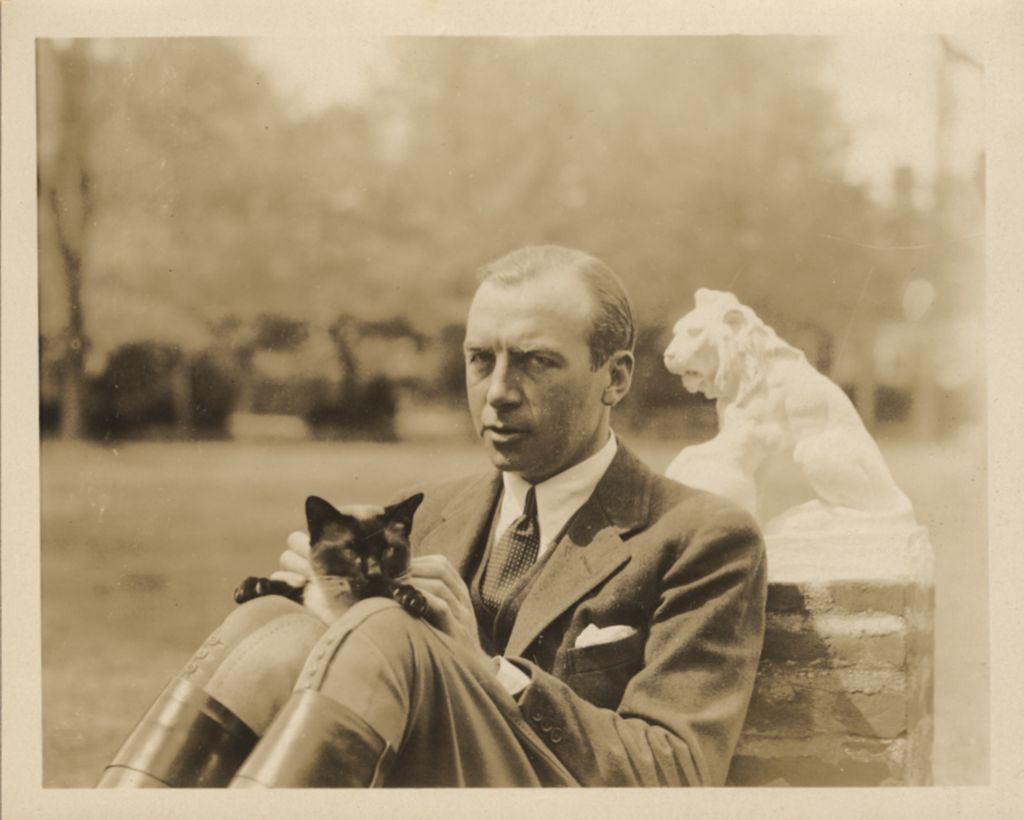
Robert Wood Johnson Jr. with Maggi Johnson’s Siamese cat, c. 1938. Morven Archive, Sheila Johnson Brutsch Collection.
The Johnsons rented the mansion from Helen Hamilton Stockton. When they moved into Morven, the house lacked many modern amenities. Part of Johnson’s first lease provided that the Stocktons pay for taxes, insurance, and all structural repairs. Johnson would be responsible for all other repairs and $5,000 worth of unspecified improvements to the property. Helen protected her gardens with a provision stating that Johnson could not change any plantings without prior permission.

Sheila and Maggi Johnson by the pool house, 1942. Morven Archive, Sheila Johnson Brutsch Collection.
In July 1939, the architecture firm Powell and Morgan drew these plans for the Johnsons pool, pool house, and tennis court. The project was completed in 1941. Robert Wood Johnson’s lease, which he renewed in 1934 and again in 1939, stated that he could build tennis and squash courts. A clay tennis court was put in and the night lights, still visible today, were added later. The pool house still exists today.

Sheila Johnson and Jane Henderson by the pool, 1941. Morven Archive, Sheila Johnson Brutsch Collection.
Sheila recalls a staff of fourteen running the Johnson household at Morven. Most important to her was her live-in nanny, Caroline Hay, whom she adored.
1945–1954
Governor Walter E. Edge & Camilla Sewall Edge
Governor Walter Edge and wife Camilla purchased Morven from Helen Stockton, and ultimately gave it to the State of New Jersey; two transactions that would preserve this site.
+
Walter Edge had the unusual distinction of serving as New Jersey governor 25 years apart. In the interim, he served as an ambassador to France. When Edge was elected governor in 1943 (for the second time), New Jersey did not have an executive mansion. Edge, who had been a guest at Morven numerous times, approached Helen Stockton about purchasing the home. Pleased with the idea, Helen agreed to the sale, with the proviso that the home would always function as a governor’s mansion or museum.

Walter and Camilla Edge in Morven’s hall during the wedding of their daughter Mary Esther, May 1952. Morven Archive. Gift of Luke MacFadyen.
Along with the purchase of the house, First Lady Camilla Sewall Edge (1923–1998) acquired some of the Stockton furniture to help furnish it. In early 1951, Edge offered Morven to the state. His successor, Governor Driscoll, supported the gift (although he thought it would best be used as a museum). The Edges remained at Morven until 1954 when the official transfer of Morven from the Edges to the state occurred.

Walter and Camilla Edge aboard the SS Île De France, December 7, 1929. Morven Archive.
“Few things in my life have given me more satisfaction than the dedication of the Princeton Battlefield and the gift of Morven to the state.”
— Walter Edge in his autobiography
1957–1962
Robert Baumle Meyner & Helen Stevenson Meyner
+
When Governor Robert Meyner took office in 1954, the future of Morven was uncertain. While the state had taken ownership of Morven, there was debate as to whether the home should serve as an executive mansion or a museum. A bipartisan committee eventually decided that the most appropriate use would be as an executive mansion. The committee also oversaw the decorating and renovations to prepare the home to become a state symbol.

Former Governor Walter Edge touring the property with Governor Robert Meyner, March 24, 1954. Morven Archive.
In January 1957, Meyner married Helen Day Stevenson (1929–1997) and brought her home to the newly renovated Governor’s Mansion. The couple used the mansion to host foreign dignitaries and prominent American leaders and press. Governor Meyner served two terms as governor. First Lady Helen Meyner continued a political career afterwards, serving as a Congresswoman in the 1970s.

Governor Robert Meyner and First Lady Helen Meyner in the library for their CBS interview, November 29, 1957. Morven Archive.
1962–1970
Richard J. Hughes & Elizabeth Sullivan Murphy Hughes
+
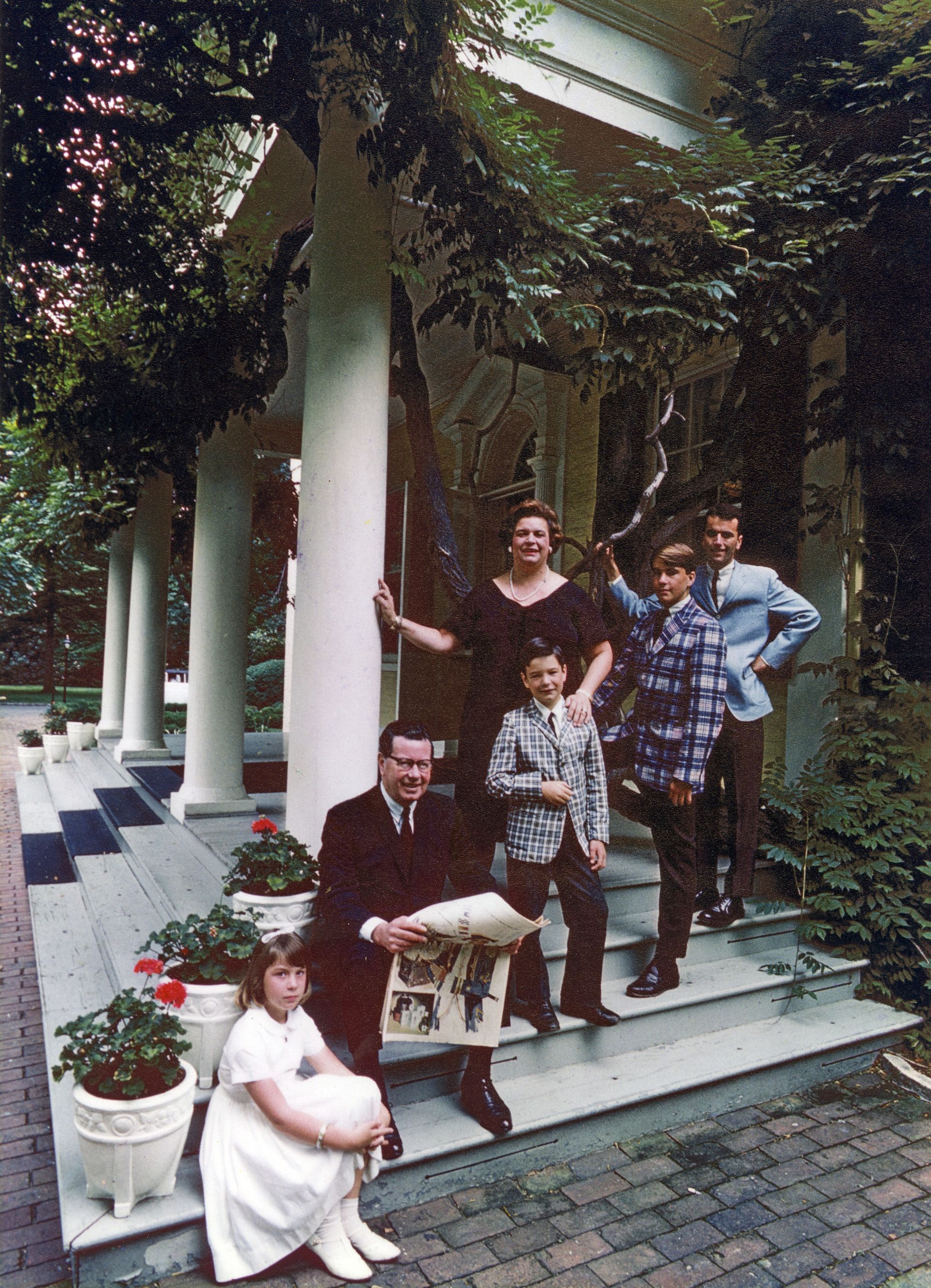
Hughes Family on the front steps of Morven, c. 1964. Morven Archive.
Serving two terms, Governor Richard J. Hughes and First Lady Betty Hughes were the residents of Morven for most of the 1960s. Upon winning the 1961 election, Hughes became the first Catholic governor of New Jersey. When they moved in, Betty was pregnant with the couple's youngest child, the 10th to join their blended family.

Hughes Family cross-country trip to the Governor’s Conference in Los Angeles, 1966. Morven Archive.
The Hughes administration saw events of national significance including the Newark Rebellion of 1967, a Cold War meeting for diplomacy in Glassboro, New Jersey, and the observation of South Vietnamese elections in 1967. In 1968, Hughes became chairman of the Democratic Party’s Equal Rights Committee. At Morven, Betty and Richard hosted political leaders and supported the Civil Rights Movement. The couple also travelled to governors conventions and other national gatherings of political leaders. Betty Hughes captured many of these hosting and travelling moments in her newspaper column, “Memo from Morven.”
“If it [Morven] can survive 261 years surely it can survive four years of the Hughes family.”
—First Lady Betty Hughes on living at Morven as a family of 12
1970–1974
William T. Cahill & Elizabeth Myrtetus Cahill
+
William T. Cahill won the 1969 election for the Republican party. The Cahills initially hoped that Drumthwacket, just down the street, might be renovated as the new governor’s mansion, but the project proved too expensive. Instead, additional interior decorating was done at Morven. Governor Cahill, First Lady Elizabeth Cahill, and four of their seven children moved into Morven in September 1970.
The Cahills were a more private family than the Hughes and temporarily suspended weekly public tours of the home. In 1971, Morven was designated a National Historic Landmark. Governor Cahill only served one term.
The Cahills were a more private family than the Hughes and temporarily suspended weekly public tours of the home. In 1971, Morven was designated a National Historic Landmark. Governor Cahill only served one term.
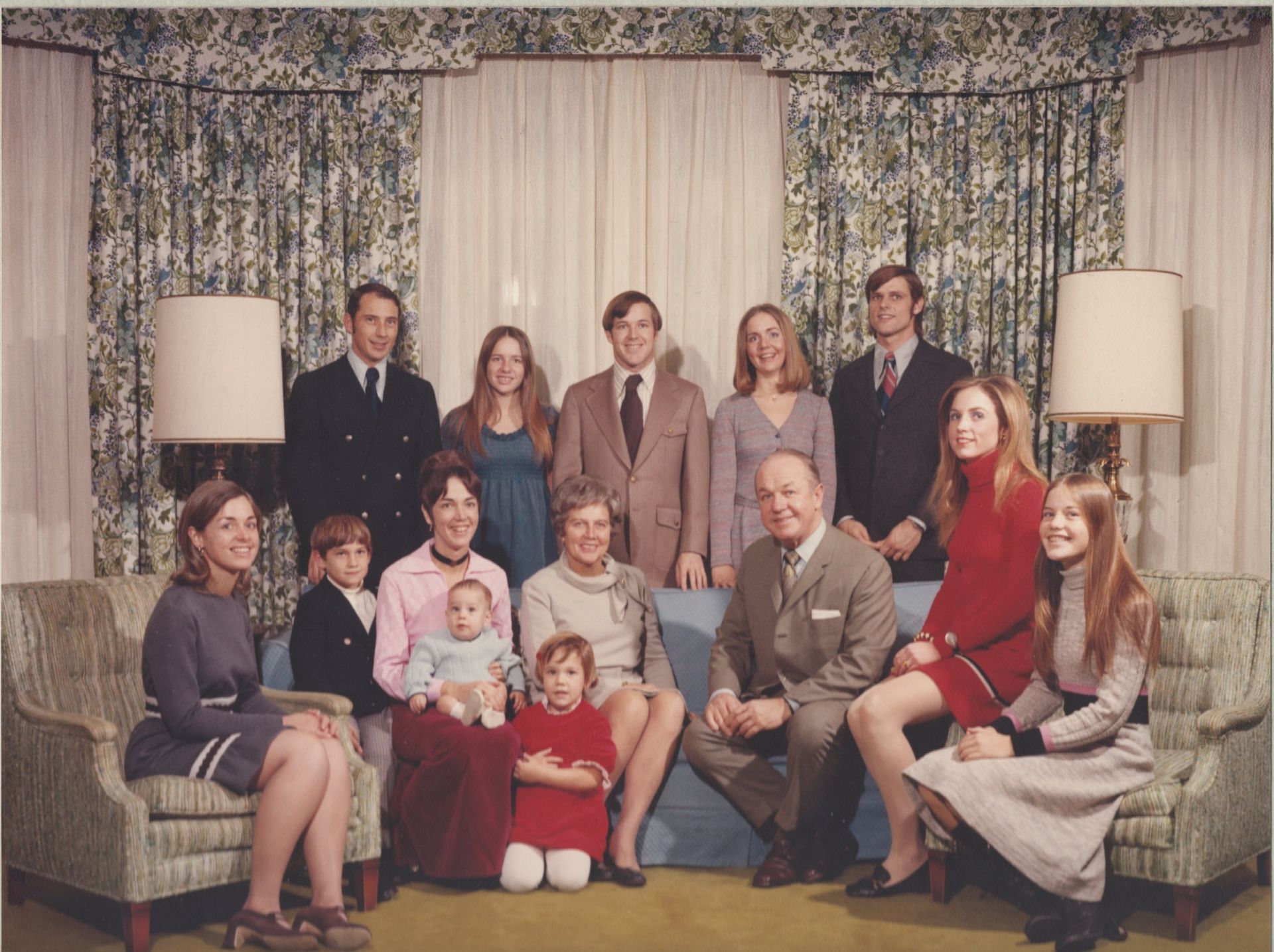
The Cahill Family in the Garden Room, c. 1970-1974. Morven Archive.
1974–1982
Brendan T. Byrne & Jean Featherly Byrne
+
Democrat Brendan T. Byrne (1924–2018) was elected Governor in November 1973, and moved into Morven with First Lady Jean Featherly Byrne (1926–2015) the following March . The couple had seven children, six of whom lived at Morven full-time. Governor Byrne made good use of Morven’s pool and tennis court, even nicknaming it the “Morven Bath & Tennis Club,” and naming tennis Althea Gibson as the “Honorary Professional” who often came to play at Morven.

Althea Gibson playing tennis at Morven, 1974. Photograph by Greg Gendall. Morven Archive.
Some of the household staff included housekeepers Rovena Brown, Mary O’Hara, and Jean Gibbons. Rod and Bobby worked on the grounds. There was also a constant rotation of state troopers in the west wing.

Abba Eban, the foreign minister of Israel, visits Morven with Governor and First Lady Byrne in the Library, April 1975. Morven Archive.
The Byrne family moved out on January 18, 1982, marking the end of Morven’s over 200-year run as a residence.
1986-2004
Restoration and Making a Museum
After serving for over 200 years as a family home, Morven was transformed into a preserved historic site that would be open to the public.
+
After the Byrne family moved out in 1982, the New Jersey Historical Society (NJHS) took ownership of Morven per an agreement with the state that they would raise $4 million towards repairing the building to use Morven as a central New Jersey branch. Under the NJHS, Morven opened to the public on June 21, 1983. However, the costs of maintaining the property proved too high. By 1986, the New Jersey State Museum (NJSM) had taken over the operation of Morven.

Morven in mid-restoration, June 2000. Morven Archive.
In 1987, the site underwent a Historic American Building Survey (HABS). Historic Morven, Inc., a friends group that first formed in 1987, was revived in 1993. The group raised the money to set forth a successful three-phase restoration. In 1993, the decision was made to restore Morven to the mid-nineteenth century as most existing records of the house’s appearance date to this period. Morven Museum & Garden opened its doors to the public on October 17, 2004.

A man working near the stripped down mantle of the Dining Room during the second phase of restoration, 2002. Photograph by Thomas Gralish. Morven Archive.


